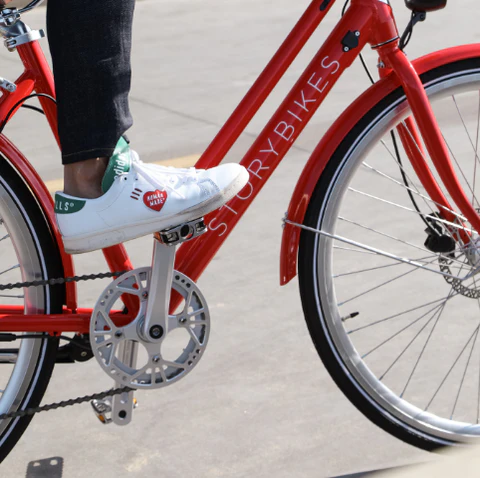What’s The Difference Between Torque And Cadence Sensing?
One of the most exciting features of electric bikes is their pedal-assist systems (PAS). These systems make riding easier and more efficient by using an electric motor to help you when you pedal. This means you can go faster, cover longer distances, and enjoy your ride without getting as tired as you would on a regular bike. While all e-bikes have some form of PAS, not all are created equal. There are two main types of pedal assist systems: torque sensing and cadence sensing. Both work by sending a signal to the motor to provide assistance, but they do so in different ways. The way they respond to your pedaling affects how smooth your ride feels and how long your battery lasts. Understanding these differences can help you choose the right e-bike for your lifestyle. Learning about e-bikes can be confusing, especially if you're new to the world of electric cycling. There’s a lot of jargon and technical terms that might feel overwhelming. But don’t worry—we’re here to break it down. In this article, we’ll explain the key differences between torque and cadence sensing, and help you decide which one suits your needs best. Cadence sensing systems use a sensor that detects when you start pedaling. A magnet on the crank turns the system on, and it stays active as long as you keep pedaling. Think of it like a switch—when you pedal, the motor kicks in; when you stop, it turns off. You can also adjust the level of assistance manually, depending on how much help you need. The main benefit of cadence sensing is its simplicity. Because it’s less complex, it's often cheaper and easier to install. However, it works best on flat terrain. If you frequently ride uphill or in hilly areas, you may find that cadence systems aren't as responsive or efficient as you'd like. Torque sensing is a more advanced type of pedal assist. Instead of just detecting movement, it measures the force you apply to the pedals. This allows the bike to adjust the amount of assistance in real time, making your ride smoother and more natural. It’s often referred to as "smart sensing" because it responds to your actual effort, not just your speed. For example, when you hit a hill, the torque sensor detects that you're pushing harder and automatically increases the motor's support. When you reach flat ground, the assistance decreases, and if you're going downhill, it may even turn off temporarily. This makes the ride feel more intuitive and energy-efficient. While torque sensing systems are usually more expensive, they offer better performance and longer battery life. They’re ideal for riders who want a more responsive and comfortable experience, especially on varied terrain. The main difference between the two systems is how they respond to your pedaling. Cadence sensing is straightforward but can feel abrupt or jerky, especially when you're climbing hills or starting from a stop. Torque sensing, on the other hand, provides a smoother and more natural ride because it adapts to your movements in real time. Another key factor is battery efficiency. Cadence systems rely on sensors that activate based on whether you're pedaling or not, which can lead to unnecessary power consumption. Torque systems, however, only provide assistance when you actually need it, which helps extend your battery life significantly. If you plan to ride on hilly or uneven roads regularly, torque sensing is the better choice. It offers greater adaptability and comfort, making it a smart investment for long-term use. In short, torque sensing is a more advanced and efficient technology compared to cadence sensing. It provides a smoother ride and better battery performance, making it ideal for most riders. However, cadence systems are more affordable and may be sufficient for those who mainly ride on flat surfaces. When choosing an e-bike, think about how you'll use it. If you're planning on doing longer rides or navigating hilly areas, torque sensing is definitely worth the extra cost. It’s a more versatile and future-proof option, especially if you plan to increase your cycling intensity over time. Ready to get started? Our e-bikes combine modern technology with classic design to give you a safe, smooth, and enjoyable ride every time. Whether you're commuting, exploring, or just looking for a fun way to stay active, we have the perfect model for you. Plus, for every bike we sell, we donate one to a student in Zimbabwe. Join us in making a difference while enjoying the benefits of electric cycling. Explore our collection today and feel free to reach out with any questions. We’re here to help you find the right e-bike for your lifestyle. Curtain Wall Roll Forming Machine Curtain Wall,Windows And Curtain Walls,Processing And Manufacturing,Exterior Wall Curtain Wall Huai'an Senyu Intelligent Technology Co., LTD , https://www.jshasyzn.com
Cadence Sensing: How It Works
Torque Sensing: A Smarter Option
Torque vs. Cadence: What’s the Difference?
Which One Should You Choose?